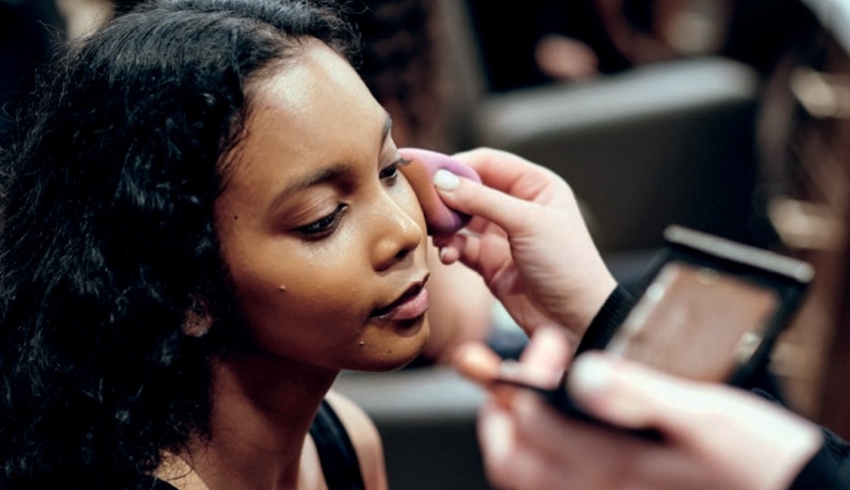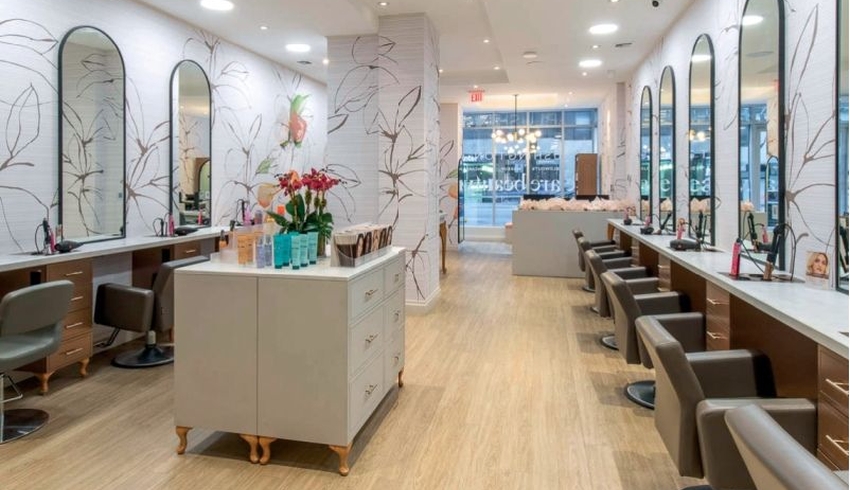The beauty and wellness industry is undergoing a remarkable transformation, and franchising is emerging as a dominant force in this change.
Once considered a niche market, wellness has become an integral part of people’s everyday lives, extending far beyond fitness to encompass mental health, beauty, and nutrition. According to the Global Wellness Institute, the wellness economy has now reached $6.3 trillion, representing 6.03% of global GDP. This sector is expected to grow at an annual rate of 8.6%, potentially reaching $8.5 trillion by 2027.
This dramatic growth reflects shifting consumer attitudes toward self-care, with wellness now seen by many as a necessity rather than a luxury. The pandemic accelerated this transformation, highlighting the importance of personal health and longevity.
Global phenomenon
“The wellness sector is one of the standout performers in franchising today,” says Stacy Anderson, global brand president at Anytime Fitness, to Global Franchise. “Coming out of 2020 and the pandemic, there’s been a heightened awareness of health and wellness, with a renewed focus on longevity – how to live better for longer. This shift isn’t just confined to the Western world; it’s a global phenomenon. Information technology and social media have made health and wellness education more accessible, fueling interest in this sector across every region.”
Anderson’s colleague, Sander van den Born, EVP of International at Purpose Brands – parent company of the world’s largest portfolio of fitness, health and wellness franchise brands and services, including Anytime Fitness, Orangetheory Fitness, Waxing the City, Basecamp Fitness/SUMHIIT Fitness and The Bar Method – concurs: “Post-pandemic, awareness of health has skyrocketed. People around the world are prioritizing not just physical strength but mental well-being too. Nearly 50% of Purpose Brands’ business comes from outside the U.S., and this growth has accelerated over the past few years. Franchising thrives in this sector because franchisees are deeply embedded in their local communities, offering personalized experiences that corporate operators can’t match.”
This shift in consumer behavior – toward a more holistic approach to health – is now a global trend, making franchising an ideal model for wellness brands to scale. By fostering local connections and offering tailored services, franchises are always uniquely positioned to meet the evolving demands of consumers worldwide.

Personalization
A defining characteristic of the wellness industry’s expansion is the increasing consumer demand for personalized services. As consumers become more knowledgeable about their health, they seek wellness experiences that cater to their unique needs – whether that’s a specific type of massage, a skincare regimen, or a niche fitness class.
John Teza, President and CEO of Hand & Stone Massage and Facial Spa, which recently announced a major expansion across seven U.S. states with the conversion of 30 LaVida Massage locations, explains further. “Customers expect wellness services to deliver not just results but exceptional experiences,” he points out. “More than ever, they want services tailored to their individual needs, whether that’s prenatal massages, deep tissue work, or personalized skincare. It’s about addressing their unique concerns in ways that feel truly individualized.”
Stacy Anderson also highlights the global nature of this demand. “Social media has made health and fitness ubiquitous, creating universal truths about the importance of beauty, health, and longevity,” she explains. “But the way these trends manifest can differ by region. In Japan, for example, skincare dominates, while Europe has its own unique wellness priorities. Localizing offerings to suit different regional preferences is crucial.”
“Customers expect wellness services to deliver not just results but exceptional experiences.”
John Teza, President and CEO, Hand & Stone Massage and Facial Spa
Studio Pilates International is a rapidly-growing franchise success story, with studios open across Australia, New Zealand, China and the United States, and more locations in the pipeline.
As co-founder Jade Winter adds: “People everywhere want the same core things from wellness services: something that works, challenges them, and is consistent. They don’t want gimmicks; they want results they can see, feel, and sustain. At Studio Pilates, that’s exactly what we deliver.”
This demand for personalization has helped create a more educated consumer base, one that values science-backed, sustainable solutions. As wellness becomes more integrated into daily life, the need for effective, results-driven services is central to the continued growth of wellness franchises, especially in fitness, beauty, and recovery.
Poised for success
The wellness industry is experiencing dynamic growth, fueled by shifting consumer trends…
- Growth and resilience: The wellness industry has bounced back strong postpandemic, with North America, Europe, and the Middle East-North Africa leading the way from 2019–2023.
- Consumer spending: Consumers in wealthier economies are fueling the sector’s growth. Around the world, wellness now makes up 5.1% of global GDP, meaning nearly 1 in every 20 dollars spent globally is on wellness-related goods and services.
- Wellness tourism: Wellness tourism is a major player within the economy. In 2021, it was valued at $850.55 billion and is expected to reach $2.1 trillion by 2030.
- Regional dynamics: Diverse sectors and regional differences around the globe highlight the dynamic nature of the wellness market and its broad appeal internationally.
Luxury to necessity
Historically, wellness services were seen as indulgent luxuries – treats for the wealthy or occasional splurges. Today, however, rising consumer awareness of the importance of self-care is shifting wellness from the realm of occasional splurges to essential, routine parts of everyday life.
“We’re seeing a shift in how customers view wellness services,” explains Teza. “Massages, facials, and other wellness services are no longer just for the rare occasion – they’re becoming an integral part of regular self-care routines. Delivering a premium experience while making wellness accessible and convenient is the key to meeting consumer expectations.”
This changing perspective aligns with a broader global trend where consumers are prioritizing long-term wellness over short-term indulgence. To cater to this shift, wellness franchises are adapting their models to offer premium services at more accessible prices. Membership or subscription models are becoming common, allowing customers to enjoy regular visits without breaking the bank.
Winter sees this shift firsthand: “Luxury in wellness isn’t about exclusivity anymore; it’s about delivering a personalized, high-quality experience that fits seamlessly into people’s daily lives. This is how we meet the
expectations of modern consumers.”

Expanding role of tech
Technology is playing a pivotal role in reshaping the wellness industry, enabling brands to deliver more personalized, efficient services. Whether through advanced skincare equipment, fitness tracking apps, or virtual consultations, tech is helping wellness businesses streamline operations while enhancing the customer experience.
“At Anytime Fitness, our technology-driven ecosystem allows us to meet people where they are – anytime, anywhere,” says Anderson. “By incorporating hybrid models, AI, and advanced programming, we can offer customized health plans that are faster and more efficient than traditional methods. Evolving technologies like red light therapy, virtual reality workouts, and biohacking tools are gaining traction globally too, as are recovery-focused solutions such as compression therapy and meditation.”
Sander van den Born underscores how technology is enhancing member experiences: “Tools like Anytime’s Evolt body scan are helping keep members on track by integrating data into apps and trainer programs. These technologies not only enhance the member experience but also set us apart from competitors. For example, tracking muscle mass and fat loss through advanced scanning tools is something few others offer.”
John Teza also points to how technology enhances both the guest experience and operational efficiency: “From advanced skincare equipment to digital booking platforms and mobile apps, technology is enabling us to deliver better results and streamline operations. At Hand & Stone, it’s all about delivering personalized services while making the process seamless for our clients,” he explains.
In boutique fitness, Jade Winter emphasizes the importance of tech to scaling operations while maintaining a personal touch. “Our video-based instruction allows clients to receive world-class guidance with every class,” she says. “This hybrid model, paired with on-site instructors offering personalized support, delivers the best of both worlds – consistent, precise instruction and real human connection.”
Opportunities for investors
- The wellness economy, valued at $6.3 trillion, is projected to grow 8.6% annually, creating a vast opportunity for global expansion.
- Rising consumer demand for tailored wellness experiences and personalized services presents a key growth area.
- Wellness brands are leveraging technology to improve services, offering new avenues for franchisees to enhance customer experiences.
- Wellness tourism, expected to hit $2.1 trillion by 2030, is a lucrative opportunity for franchises to cater to travelers’ health needs.
Challenges and opportunities
As the sector grows, an increasing number of wellness franchises are looking to expand internationally. While this presents exciting opportunities for some, it also brings unique challenges.
“The U.S. has been our foundation for 22 years, but our first international market was Australia, which now boasts nearly 600 units. Japan is another mature market for us, with over 1,000 units,” reveals Anderson. “Southeast Asia is experiencing extraordinary growth. The region has great labor models, an unparalleled
service culture, and improving economics, making franchise investments more feasible. The Middle East, in particular Saudi Arabia, is another area of focus for us in 2025, as government-backed initiatives are promoting health and wellness.”
Sander van den Born sees similar potential in other global territories. “Eastern Europe is key for us, complementing our strong presence in Western Europe. Latin America also offers significant opportunities, particularly in Mexico and Colombia, where we have a presence but there’s room to expand,” he reveals.
However, successful expansion requires careful planning. Winter points out that legal and regulatory hurdles can slow down growth: “Every country has different rules governing franchising, so it’s crucial to seek legal guidance early,” she warns. “Compliance with franchise disclosure laws, contracts, and obligations is key to success.”
Cultural differences also play a significant role. Wellness practices that are popular in one region may not resonate in another, requiring franchises to adapt their offerings. “Understanding local laws, preferences, and expectations is crucial for success in new markets,” she adds.
Expanding global influence
The wellness economy is highly diversified, with healthy eating, personal care, and physical activity accounting for more than 60% of the multi-trillion-dollar global market. As wellness becomes a staple in daily life, the demand for franchises in these sectors is set to continue.
Sander van den Born highlights how franchisors can seize an opportunity. “At the heart of Purpose Brands’ success is the human connection,” he says. “While technology is a vital tool, true success comes from building personalized relationships. Our franchisees are passionate about health and wellness, which is what drives our brand.”
Stacy Anderson supports this view. “Anytime Fitness culture revolves around four Ps: purpose, people, profits, and play. What truly matters is finding partners who are invested in the business. The relationships we build are the key to our success, enabling us to navigate both the opportunities and challenges of global expansion,” she adds.
Bright future
“The wellness sector isn’t just about fitness; it’s about living better for longer,” reiterates Stacy Anderson. “Health is the ultimate currency, and people are starting to prioritize their physical and mental wellbeing as investments in their future. Franchising thrives in this sector because it enables us to deliver life-enhancing services in a personalized, community-focused way – qualities in high demand across the globe.”
With the wellness economy’s growth trajectory continuing, the time to act is now. For entrepreneurs and investors looking to capitalize on this exciting sector, the opportunities are limitless, and the future of wellness franchising looks brighter than ever.
Building a wellness franchise that connects with customers

Blushington, the express luxury beauty concept dedicated to making A-List beauty services accessible to all customers, is disrupting the U.S. beauty industry with its franchise model. CEO Natasha Cornstein explains why:
“Blushington’s journey took a significant turn when we transitioned to a franchise model after COVID. I’ve always believed in the power of surrounding myself with experts who can help guide our growth, which led to the creation of our National Advisory Board. For example, Jessica Bruner, with over 20 years in commercial real estate, advises us on finding prime locations and Joanna Mize, founder of Snippets, a children’s hair franchise, brings invaluable franchising expertise. These women are so important to Blushington’s growth, and I’m grateful for the strategic pillars they provide.
Our franchising journey officially began in January 2023. Before that, we spent years building a solid operational foundation, and now we’re blending that experience with the energy of being an emerging franchisor. We’re focusing our expansion on the Southeast and Southwest of the U.S., particularly Texas, Florida, the Carolinas, and Georgia. These regions meet three crucial criteria: high consumer spending on wellness and beauty, favorable real estate and labor costs, and strong, growth-friendly economies. Just this morning, we announced two new locations in Houston, Texas, and we’re excited about growth in these regions.
The beauty and wellness sectors have been democratized – what was once reserved for the wealthy is now available to everyone. But even with this shift, high standards are non-negotiable. Personalization and luxury are no longer just nice-to-haves. They’re expectations. We’ve always emphasized the importance of listening to our clients and helping each customer feel like their best, most confident self. To do this, we’ve trained our artists to “power listen” – which means truly understanding clients’ desires and translating them into actionable services. This approach guarantees that every customer feels their experience was custom-designed just for them, whether they’re here for a facial or a makeup application.
“The beauty industry is known for being recession-resistant, and we’ve seen this firsthand”
Natasha Cornstein, CEO, Blushington
Of course, franchising comes with its challenges. One of the biggest hurdles we’ve faced is finding the right franchise partners. We’ve been very selective – out of hundreds of inquiries this year, we’ve awarded only three franchises. Our goal is to reach 130 locations by 2028, but we’re committed to finding franchisees who share our values of inclusivity and excellence. For us, it’s not just about growth – it’s about growth that aligns with our brand mission.
Economic trends are always something we keep in mind. The beauty industry is known for being recession-resistant, and we’ve seen this firsthand. While other sectors, like restaurants, may feel inflationary pressures more acutely, beauty remains a luxury that consumers are not willing to give up. That’s why our accessible pricing for luxurious experiences has kept us resilient, even during challenging economic times.
Maintaining brand consistency while also adapting to local needs is another challenge we face. We’ve built strong systems and training to ensure our brand is consistent across locations, from our color palette to our service standards. But we also empower our franchise owners to engage with their local communities in ways that resonate with them. For example, while Blushington has partnered with high-end brands like Manolo Blahnik and TV shows like Pretty Little Liars, we also encourage local partnerships that reflect each franchise’s community values.
Blushington’s franchise journey is only just getting started, and we’re incredibly excited for what’s ahead. Our commitment to high-quality, personalized experiences, combined with our strong leadership team and robust systems, positions us for continued growth.
As we expand across the U.S. and potentially beyond, our goal remains the same: to bring accessible luxury, wellness, and beauty to everyone who walks through our doors.


